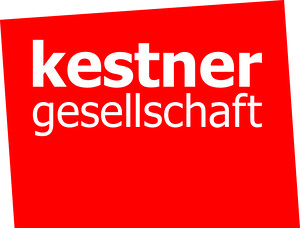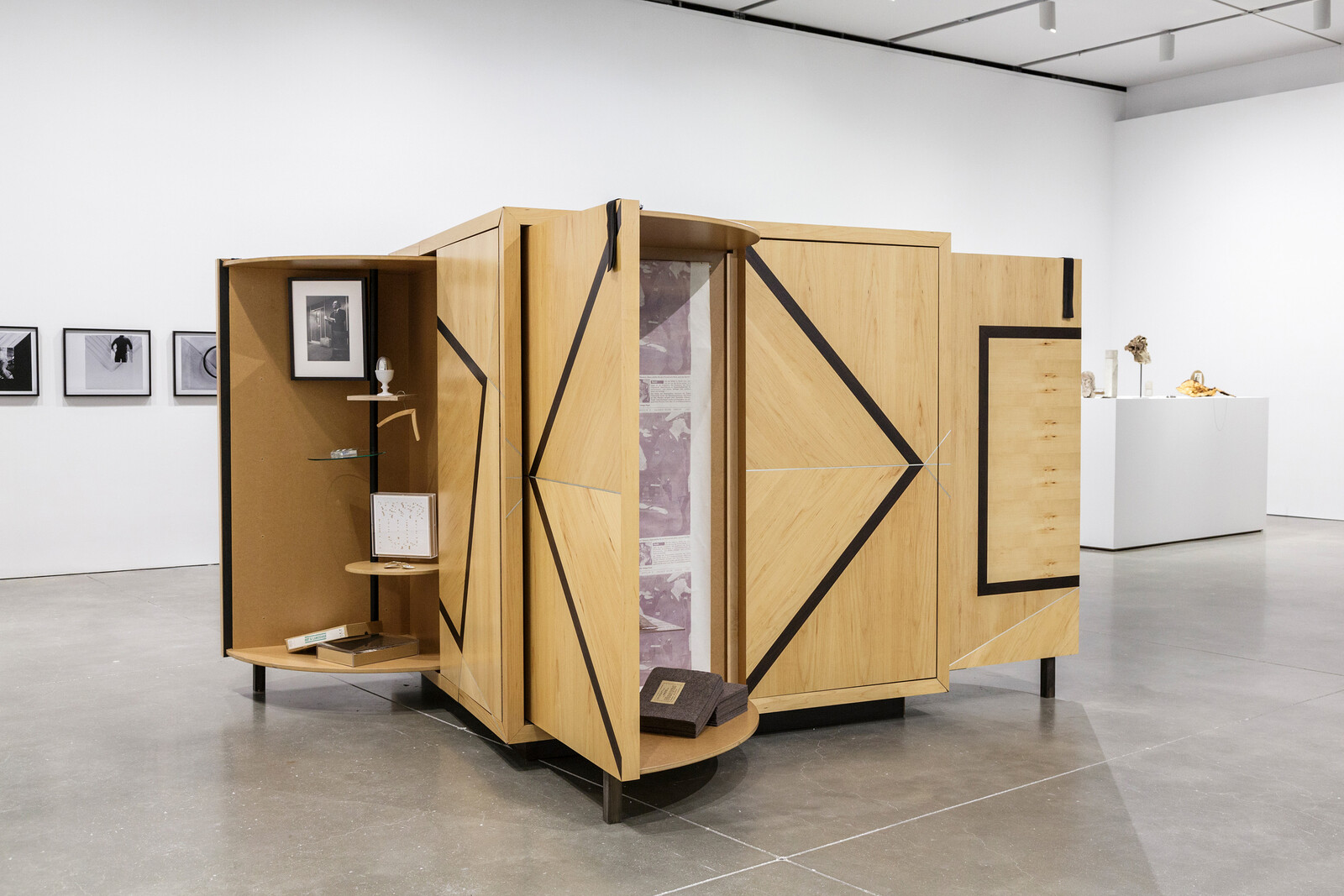stairway to nowhere
May 24–August 4, 2019
Goseriede 11
30159 Hanover
Germany
Hours: Tuesday–Sunday 11am–6pm,
Thursday 11am–8pm
On the occasion of the 100th anniversary of the Bauhaus, the Kestner Gesellschaft is presenting a solo exhibition by the Polish-British artist Goshka Macuga (*1967 in Warsaw, lives and works in London). The internationally renowned artist questions historiography, especially key ideas of modernism such as a belief in progress, authorship, and utopia. In detective-like research, she finds breaks, pitfalls, and ambiguities in a supposedly linear narrative. This exhibition focuses on the Bauhaus, the influential school of art, architecture, and design, and its connection to the Kestner Gesellschaft. From May 24 to August 4, 2019, around 40 installations, sculptures, textiles, and collages by Goshka Macuga will be on view throughout the building. The artist is creating new works specifically for the exhibition at the Kestner Gesellschaft, including a tapestry and an installation in collaboration with the London lighting designer Michael Anastassiades, among others.
Goshka Macuga’s unique artistic practice is based on historical and archival research, which she uses in her works. As an artist, she thus simultaneously assumes the role of a historian, curator, and designer. Macuga poses the question of authorship on various levels: she adapts designs, integrates works by other artists into her work, for example by Joseph Beuys, Christo, Art & Language and General Idea, and collaborates with others, including the world-famous fashion designer Gareth Pugh.
The focus of her exhibition at the Kestner Gesellschaft is the changing ideological positioning and political instrumentalization of the Bauhaus from a historical and present-day perspective. While today the Bauhaus is often perceived as a coherent unit, as a brand of clear design, Macuga seeks to artistically demonstrate the contrasting worldviews within which the institution of the Bauhaus was positioned or positioned itself. These range from early spiritual, socialist, and Marxist ideologies to apolitical or capitalist positions. The critical examination of the representative function of design plays a special role, not least based on iconic designs from the milieu of the three directors of the Bauhaus, Walter Gropius, Hannes Meyer, and Mies van der Rohe, who also embody different views of the Bauhaus.
The title of the exhibition also refers to a little-known story: Stairway to Nowhere was originally the title of a public sculpture by the Bauhaus teacher Herbert Bayer, who developed the typical typography of the Bauhaus, among other things. In 1969, the six-meter-high and nine-meter-wide staircase sculpture was commissioned by the American oil company ACOR in Los Angeles. At the request of the company, the sculpture was renamed Double Ascension.
The content and format of Goshka Macuga’s exhibitions are always dependent on the specific institutional contexts in which her works are shown. Thus, the history of the Kestner Gesellschaft, which maintained close ties to Bauhaus figures such as Feininger, Klee, and Gropius in the 1920s and 1930s, is also important for the concept of the exhibition.
A central work in the exhibition is Goshka Macuga’s Kabinett der Abstrakten (after El Lissitzky) (2003). The work refers to the historical Kabinett der Abstrakten, which was realized in 1927 at the Provinzialmuseum in Hanover by El Lissitzky and Alexander Dorner. The idea of this original work—namely, to allow for a new way of interacting with and viewing art—remains intact in Macuga’s work. Macuga also addresses the specific history of the exhibition venue, since both El Lissitzky and the interim director Alexander Dorner had a very close relationship to the Kestner Gesellschaft.
The large-scale glass installations Haus der Frau 1 (2008), Haus der Frau 2 (2008), and Deutsches Volk – deutsche Arbeit (2008) will also be on view. These works refer to the designer Lilly Reich, a largely forgotten pioneer of exhibition design, partner of Mies van der Rohe, and one of the first women in the German Werkbund.
Goshka Macuga studied from 1991 to 1996 at Central Saint Martins College of Art and Design and at Goldsmiths, University of London. Soon after her studies, her works were shown internationally, and in 2008 she was nominated for the prestigious Turner Prize. Her works are exhibited in numerous institutions in Germany and internationally, including the Neues Museum in Nuremberg (2018), Hamburger Bahnhof in Berlin (2018), Witte de With in Rotterdam (2017), Fondazione Prada in Milan (2016), the New Museum in New York (2016), the Schinkel Pavillon in Berlin (2016), Documenta 13 (2012), and the Venice Biennale (2009).
The exhibition is supported by the Niedersächsische Sparkassenstiftung, the friends of the Kestner Gesellschaft, and the lighting manufacturer Flos.
The exhibition of Goshka Macuga is sponsored by Outset Germany_Switzerland.
Curators: Christina Végh and Lea Altner



